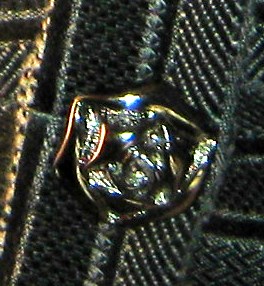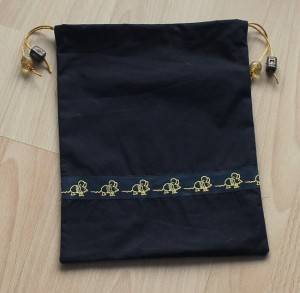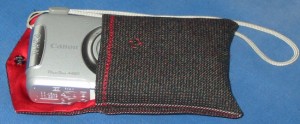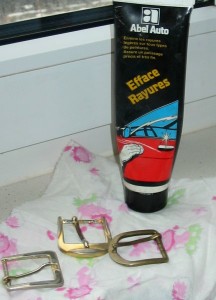The nearly smart cozy for smartphones
Nachdem ich jetzt ein funktionierendes Handy habe, braucht das auch eine Hülle. Ich habe ja keine Lust, mir (schon wieder…) den Bildschirm zu zerkratzen.
I finally gave in and I am owner of a cell phone that actually works. Now I needed a protection for it, I didn’t want to scratch a screen… again.
 Also ein paar Stoffreste von der Tasche geschnappt, viel am Handy rumgemessen und eine Hülle genäht. In bewährter Manier wieder mit Seide gefüttert, denn das reinigt gut und gepolstert mit einer Schicht Volumenvlies.
Also ein paar Stoffreste von der Tasche geschnappt, viel am Handy rumgemessen und eine Hülle genäht. In bewährter Manier wieder mit Seide gefüttert, denn das reinigt gut und gepolstert mit einer Schicht Volumenvlies.
So I picked some scraps from the bag, took a lot of measurements and made a cozy. Since I am lazy and like self-cleaning options I lined the little thing with silk and added a layer of padding for protection.
 Eine Ladestation muß Frau natürlich auch haben und da fragte ich mich doch, warum das denn zwei Teile sein müssen?
Eine Ladestation muß Frau natürlich auch haben und da fragte ich mich doch, warum das denn zwei Teile sein müssen?
Schließlich reise ich doch öfter und gerade da soll das Gepäck so klein wie möglich sein. Also wurde die Ladestation sozusagen integriert. Funktioniert auch.
Since every crafter in blogland seems to have a „charging unit“ that helps to organize the phone while charging it I wanted that also. But I wondered why the cozy and the charging unit have to be two items?
I do travel quite a lot and I want my luggage to be as small as possible. So I took care while constructing it, that it could be used as a charging unit also. Works fine.
 Die Rückseite hat noch eine kleine Tasche, in die man entweder die Kopfhörer stecken kann oder das USB Kabel zum Nachladen am Rechner. Wie gesagt… Reisefertig alles mit einem Griff.
Die Rückseite hat noch eine kleine Tasche, in die man entweder die Kopfhörer stecken kann oder das USB Kabel zum Nachladen am Rechner. Wie gesagt… Reisefertig alles mit einem Griff.
The back has a small pocket just big enough for either the head phones or the USB cable for charging on the laptop. As I’ve said… travel ready, everything at hand.
Alles sehr smart gedacht…. wenn nicht…
Very smartly done… if not…
 Wenn ich nicht den zuerst schön langen Verschlussstreifen vor dem Annähen gekürzt hätte, weil ich dachte, der sei viel zu lang.
Wenn ich nicht den zuerst schön langen Verschlussstreifen vor dem Annähen gekürzt hätte, weil ich dachte, der sei viel zu lang.
Damit reichte der Druckknopf nur bis auf die Klappe und die ganze Klappe kann sich öffnen, was nun keinen sicheren Verschluss darstellt.
Damit die Hülle dennoch benutzt werden kann, habe ich einen winzigen Drücker von Hand aufgenäht. Das hält derweil, aber ich denke, da muß ich wohl noch eine zweite Variante nähen….
If I had not cut the originally very long strap. Because while constructing I thought it was way to long.
So the snap can only close on the flap and then flap and strap can unfold together which is not the secure closer I want for my phone.
To make it usable I’ve sewn a tiny snap on the tip of the strap, but that is only a temporary solution. I guess I’ll have to make another one…




















